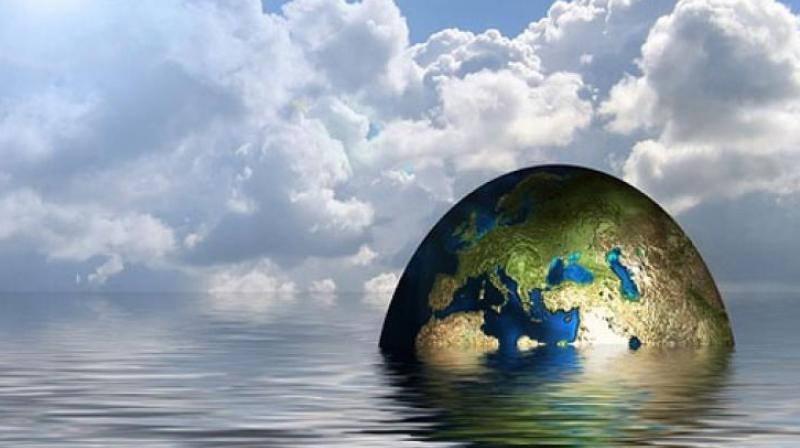Ecoistic: The earth is growing warmer, why court disaster?

The weather seems to be getting wilder and fiercer every passing year. From heavy and sudden downpour across Northern parts of India to raging wildfires and forest fires in various parts of South Indian mountain ranges. We have also been mute spectators to ruinous floods in other parts of our country. But all we can say that the human and property damage of extreme weather conditions is enormous and even more difficult to repair them.
Every time an extreme weather condition causes huge loss of life and property, it is declared and recorded as a natural disaster. And these natural disasters are particularly of greater risk to smaller & lesser income nations because they can easily wipe out a significant portion of their economic and financial structure. For decades, various global financial institutions have been committed towards helping and aiding the post-disaster needs and requirement of the affected communities. But these needs and requirements are bound to increase with change in climate and other weather conditions…! In other words, it has been predicted that climate change is bound to bring in more frequent weather-related natural disasters.. Based on the analysis of the October 2017 edition of World Economic Outlook, natural disasters are bound to increase five to seven folds with increase in global warming and climatic changes.
For ex: between 1990 and 2014, there were more than 9,200 weather related disasters, with floods, hurricanes, landslides and epidemics being among the most common. In a sample of 220 countries and territories, the historical relationship between the occurrences of each type of weather-related natural disaster and the monthly weather patterns over the previous 25 years we carefully studied. (for example: disasters caused by flood / wildfire / hurricane / etc.). Based on the study it was found that temperature and precipitation are the most important indicators of almost 92% of disasters. As predicted and expected rise in ambient temperature is associated with more disasters that may be caused by droughts, wildfires, heat waves, tropical cyclones and other cyclonic storms. Similarly increasing rainfall is associated with disasters caused by droughts, wildfires and heat wave.
Everyone would certainly wonder as to how global warming affects the chances of occurrence of natural disasters…..! A combination of the empirical estimates from historical data with the projected temperature and precipitation for each country helps in predicting the natural disasters and its intensity as well. Therefore, this would certainly help us predict the probability of each type of weather-related disaster in future. With the current trend in growth and development patterns the mean global temperature is expected to increase by about 4°C by 2100.
The recent studies also suggest that most of the weather-related disasters will become even more common by the end of the century, across all income groups and nations. But the frequency of disasters caused by heat waves, tropical cyclones and wildfires will increase considerably compared to other forms. However many scientists expect that the overall frequency of tropical cyclones will decline in a warmer world, they also expect the storms that form to be more intense; which will likely result in more disasters. Similarly, floods and epidemics, which primarily affect low-income countries, will also become more common. Mosquitoes and pathogens reproduce and spread faster in a warmer environment, increasing the probability of epidemics.
As natural disasters become more frequent and intense, we need to prepare for this change and take immediate measures to keep them in check. Increasing risk from natural disasters and temperature rise will certainly impact micro and macro economic activities across the world. And this is bound to trigger increased migration of communities from affected regions to nearby areas that are considerably safer. One of the classic examples is the extreme weather conditions currently affecting the southern states of Kerala, Karnataka, parts of Goa & Maharashtra, especially the coastal belt and the Western Ghats region, which has forced the communities to shift towards safer zones. This extreme monsoon is mainly due to the change in temperatures across the Equator and disproportionate & erratic precipitation rates in the adjacent region, which regulate global climate. And this is a direct result of huge rise in greenhouse gases leading to creation of more and more heat islands every passing day.

